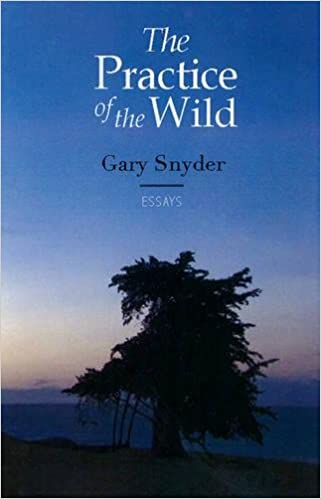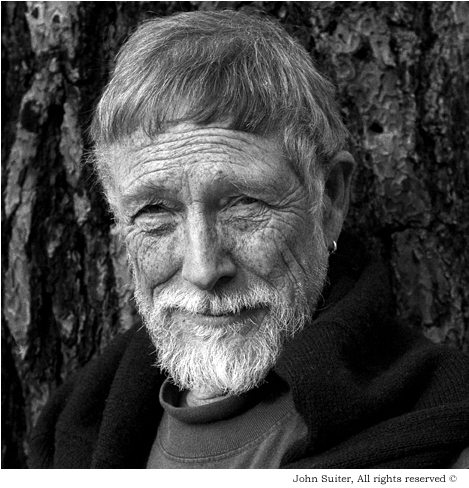 |
Home |
Catalogs |
Contact Us |

Books on:
Animal RightsBlack History
Clean Energy
Democracy
Eco Design
Eco History
Food and Nutrition
Genetic Engineering
Green Cities
Green Politics
Local Economics
Natural Building
Peace and Nonviolence
Simple Living
Trees and Forests

|
The Practice of the Wild
by Gary Snyder
Counterpoint, 2010
Purchase on Amazon.com
The nine essays in The Practice of the Wild display the deep understanding and wide erudition of Gary Snyder in the ways of wildness and the world. These essays, first published in 1990, stand as the mature centerpiece of Snyder's work and thought. Future readers will come to see this book as one of the central texts on wilderness and the interaction of nature and culture.
Praise for The Practice of the Wild
"Contemplating Gary Snyder's depth of journey into nature here, I think of what D. H. Lawrence said of Whitman: he's camped out alone, way beyond everybody. But it's looking like where Snyder is, would be a wise bet for all of us. He makes a good trail in this book, laid out expertly and fun to walk on." --Thomas J. Lyon
"Gary Snyder's The Practice of the Wild is an exquisite, far-sighted articulation of what freedom, wildness, goodness, and grace mean, using the lessons of the planet to teach us how to live." --Gretel Ehrlich
Quotes from The Practice of the Wild
"It would appear that the common conception of evolution is that of competing species running a sort of race through time on planet earth, all on the same running field, some dropping out, some flagging, some victoriously in front. If the background and foreground are reversed, and we look at it from the side of the 'conditions' and their creative possibilities, we can see these multitudes of interactions through hundreds of other eyes. We could say a food brings a form into existence. Huckleberries and salmon call for bears, the clouds of plankton of the North Pacific call for salmon, and salmon call for seals and thus orcas. The Sperm Whale is sucked into existence by the pulsing, fluctuating pastures of squid, and the open niches of the Galapagos Islands sucked a diversity of bird forms and function out of one line of finch.
"Conservation biologists speak of 'indicator species'-- animals or birds that are so typical of a natural area and its system that their condition is an indicator of the condition of the whole. The old conifer forests can be measured by 'Spotted Owl,' and the Great Plains once said (and would say it again) 'bison'. So the question I have been asking myself is: what says 'humans'? What sucks our lineage into form? It is surely the 'mountains and rivers without end'-- the whole of this earth on which we find ourselves more or less competently at home. Berries, acorns, grass-seeds, apples, and yams call for dextrous creatures something like us to come forward."
"The immediate time frame of human experience is the climates and ecologies of the Holocene--the 'present moment,' the ten or eleven thousand years since the latest ice age. Within the traditional literatures there are probably a few complete tales that are that old, as well as a huge quantity of later literature composed of elements borrowed from the oldest tradition. For most of this time, human populations were relatively small and travel took place on foot, by horse, or by sail. Whether Greece, Germania, or Han China, there were always nearby areas of forest, and wild animals, migratory waterfowl, seas full of fish and whales, and these were part of the experience of every active person. Animals as characters in literature and as universal presences in the imagination and in the archetypes of religion are there because they were there. Ideas and images of wastelands, tempests, wildernesses, and mountains are born not of abstraction but of experience: cisalpine, hyperboreal, circumpolar, transpacific, or beyond the pale. This is the world people lived in up until the late nineteenth century. (When was worldwide population one-half of what it is today? The 1950s.)"
"The 'Mountain and Waters Sutra' is called a sutra not to assert that the 'mountains and rivers of this moment' are a text, a system of symbols, a referential world of mirrors, but that this world in its actual existence is a complete presentation, and enactment--and that it stands for nothing. . . . The 'Mountains and Waters Sutra' goes on to say: 'All waters appear at the foot of the eastern mountains. Above all waters are all mountains. Walking beyond and walking within are both done on water. All mountains walk with their toes on all waters and splash there.' "
Table of Contents of The Practice of the Wild
The Etiquette of Freedom
The Place, The Region, and the Commons
Tawny Grammar
Good, Wild, Sacred
Blue Mountains Constantly Walking
Ancient Forests of the Far West
On the Path, Off the Trail
The Woman Who Married a Bear
Survival and Sacrament
Reader Comments |
